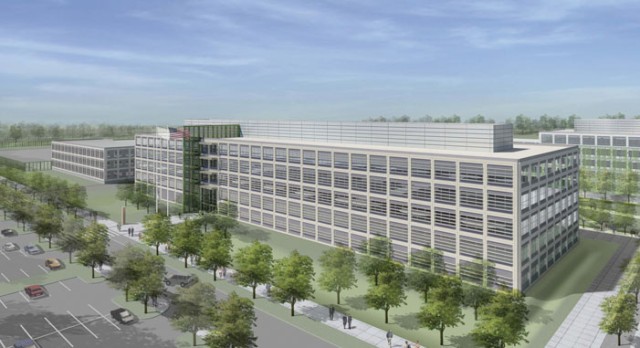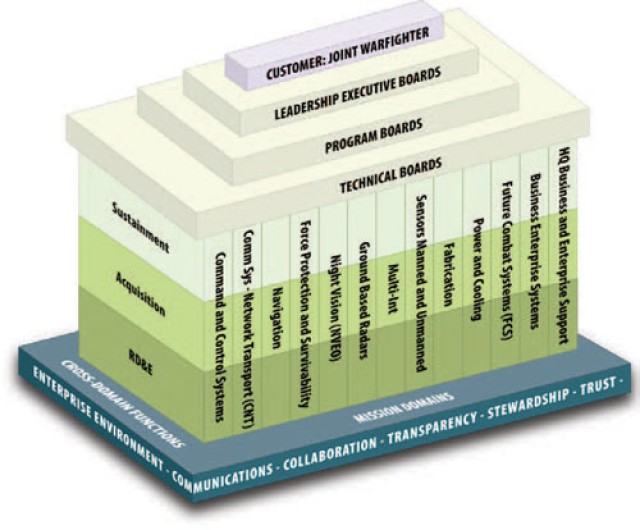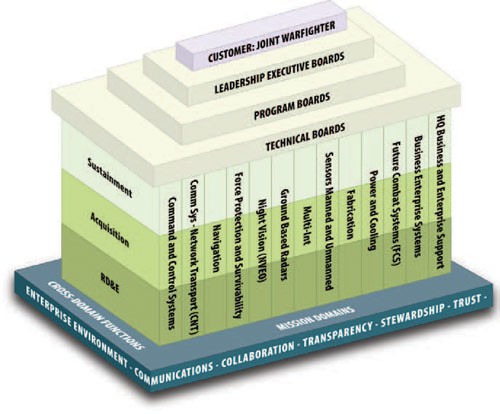FORT MONMOUTH, N.J. -- As times change, so must the Army.
The end of the Cold War and now a new set of global challenges have propelled the Army to transform itself both in structure and fundamentally in how it does business. These changes come against the backdrop of the third-longest war in our nation's history and the longest ever fought by an All-Volunteer Force.
"Looking ahead, we see an era of persistent conflict--protracted confrontation among state, non-state, and individual actors that are increasingly willing to use violence to achieve their political and ideological ends," wrote Secretary of the Army Pete Geren and Army Chief of Staff Gen. George W. Casey, Jr., in their introduction to the 2009 Army Posture Statement.
The Posture Statement also describes the Army as "out of balance" after seven years of continuous combat, "straining our ability to maintain the All-Volunteer Force and maintain strategic depth."
In a speech to CECOM Life Cycle Management Command (LCMC) and Fort Monmouth, N.J. personnel in November 2008, Gen. Casey elaborated by saying, " ... we are being stretched to operate at a pace that we can't sustain either from the perspective of sustaining our Soldiers and families and civilians, or from rebuilding the strategic flexibility to do other things."
Future Army operations in the shifting global environment are expected to span the spectrum of conflict, from peacekeeping to counterinsurgency to major combat.
A key element in preparing for the future is continuous improvement of the Army Force Generation (ARFORGEN) process, which generates trained, ready and cohesive units that can rotate to meet current and future demands.
Aside from generating manpower, the Army also seeks to streamline the process of providing Soldiers with effective and timely equipment through integrated research and development, acquisition and logistical sustainment.
An important part of the Army's modernization includes the adoption of an "enterprise" approach, with enterprise defined as "a cohesive organization whose structure, governance systems and culture support a common purpose."
One of the core enterprises in the Army transformation is the Materiel Enterprise. Key partners in this enterprise are the Army Materiel Command (AMC) and its major subordinate commands including the CECOM LCMC; the Assistant Secretary of the Army for Acquisition, Logistics, and Technology ASA (ALT) and Army Program Executive Offices (PEOs), including the PEOs for Command, Control and Communications-Tactical (C3T); for Intelligence, Electronic Warfare and Sensors; and for Enterprise Information Systems.
The Materiel Enterprise will focus on the imperatives that will rebalance the Army: Sustain, Prepare, Reset, and Transform.
AMC Commander Gen. Anne E. Dunwoody said in an interview with Military Logistics Forum that an aging infrastructure is diminishing the resilience and flexibility of our industrial base. "Despite these unprecedented challenges," the general added, "the way forward is clear; the surest path to the necessary transformation of the Army is the adoption of a comprehensive enterprise approach."
A key linchpin of the Enterprise approach is to adapt the Army culture, organizations and processes so that leaders take a holistic approach to run the Army more effectively. That means more collaboration, increased speed, better planning, greater transparency, eliminating duplicate efforts and fostering a culture that provides incentives for good stewardship.
Army planners stress that the Enterprise approach is not a re-allocation drill or a creation of more layers of bureaucracy that would hobble decision-making.
Because it's common for personnel to think in terms of their own individual organizations or "stovepipes," adopting a holistic view may take some time.
"Culture change is always difficult," said Col. Anne L. Davis, the AMC Materiel Enterprise Task Force Director. "People tend to look at things from an organizational perspective. What they need to do is think in the context of what is best for the Army and not necessarily what's best for the organization."
Col. Davis emphasized that heightened coordination and communication are needed to truly transform the Army. "In the Materiel Enterprise the goal is to synchronize our actions with other core enterprises so that we don't re-create four new stovepipes."
The need to adopt an Enterprise approach is compelling when the scale and scope of AMC is placed in perspective. The command has more than 61,000 employees, a $47 billion budget and $104 billion in contract obligations. By including the ASA (ALT), which has a $34 billion budget, the Materiel Enterprise would have a combined budget of $81.5 billion. That would place the Material Enterprise close to number 22 on the Fortune 100 list of the largest corporations.
Within Army Team Command, Control, Communications, Computers, Intelligence, Surveillance and Recon-naissance (C4ISR), Unit Set Fielding (USF) has been instrumental in providing enterprise-focused support to the force.
Initiated in FY 2005 by the PEO for C3T, this "system of systems" method for fielding C4ISR equipment has grown to include all phases of support and now heavily involves the CECOM LCMC Logistics and Readiness Center (LRC).
Today, USF has been lauded around the Army as the principal means of accurately synchronizing, equipping, and sustaining support within all phases of ARFORGEN.
To provide a framework to shape the Materiel Enterprise, a three-tiered approach to collaboration has been put into place:
-- An Executive Forum to oversee the entire Materiel Enterprise
-- An Operating Forum that ensures integration across the Enterprise
-- Execution Forums that encourage functional and multi-functional coordination with Lifecycle Management Commands, PEOs and Program Managers, ASA (ALT) Deputies and other AMC major subordinate com-mands.
This structure also facilitates recommendations to the Army Enterprise Board in order to operate more effectively and efficiently within the Enterprise. This type of information flow is considered critical for transformation.
"Communication is the key," said Col. Davis. "It's getting the right people involved in decision-making early on. It's not trying to change who has the authority, but we want the right people at the table so they can be heard.
"The Materiel Enterprise has made great strides after six to eight months. It's going to take time. The goal is to adapt the Enterprise approach by 2011 to the entire Army. But everybody's working toward that now."
(This article appeared in Spectra, the magazine of the CECOM Life Cycle Management Command. To access the full issue in PDF format, 3.2 megabytes, click on the link appearing in the "Related Links" box at the start of the article.)




Social Sharing